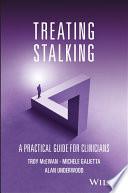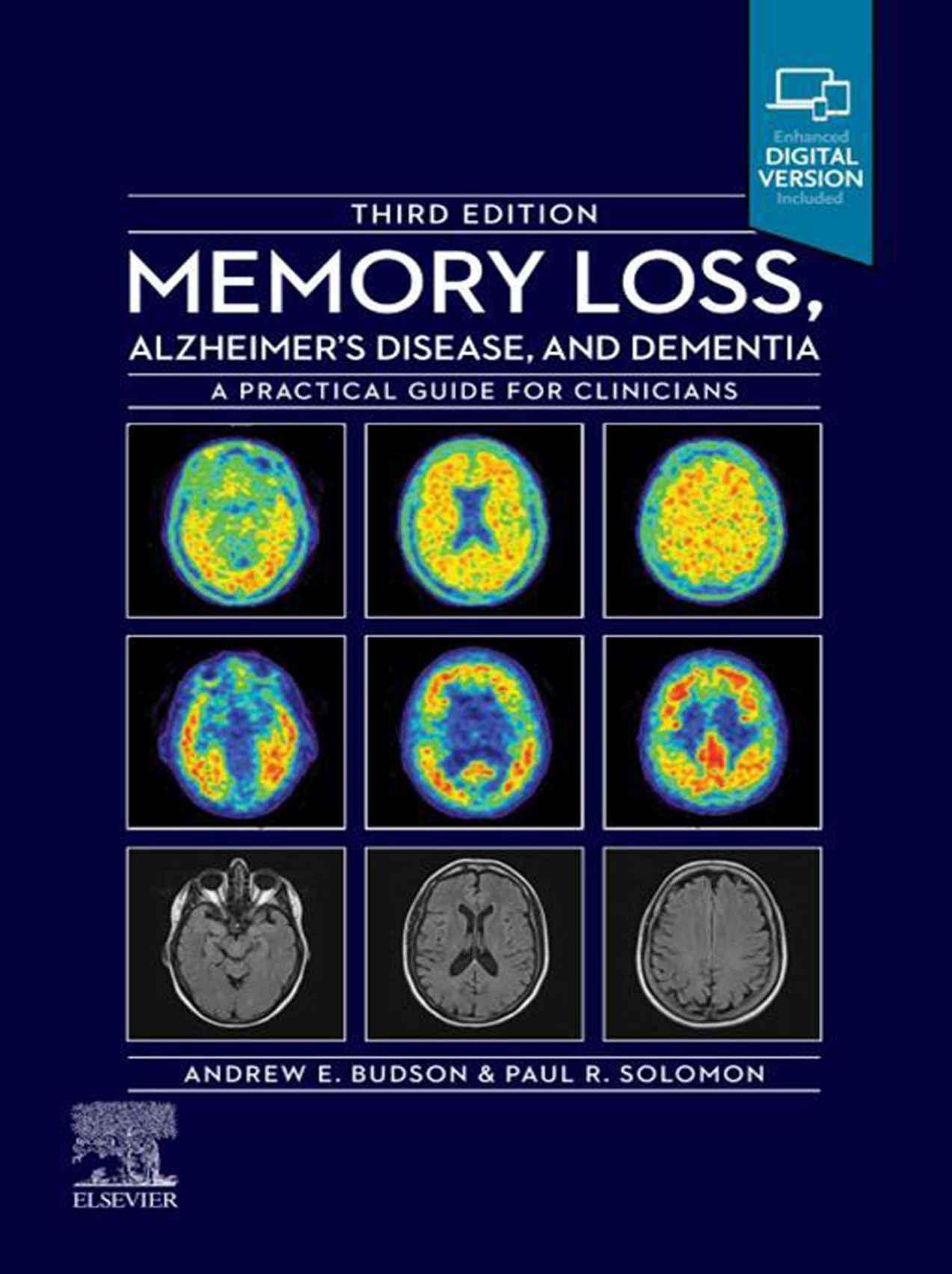Section II: Differential Diagnosis of Memory Loss and Dementia
4. Alzheimer’s Disease
Prevalence, Prognosis, and Definition
Alzheimer’s Pathology
Neurochemistry
Diagnostic Criteria
Risk Factors, Pathology, and Pathophysiology
Common Signs, Symptoms, and Stages
Things to Look for in the History
Things to Look for on the Physical and Neurological Examination
Pattern of Impairment on Cognitive Tests
Laboratory Studies
Structural Imaging Studies
Molecular and Functional Imaging Studies
Differential Diagnosis
Treatments
References
5. Primary Age-Related Tauopathy
Prevalence, Pathology, Genetics, and Definition
Clinical Features, History, and Pattern of Impairment on Cognitive Tests
Things to Look for on the Physical and Neurological Examination
Laboratory Studies
Structural Imaging Studies
Functional and Molecular Imaging Studies
Differential Diagnosis
Treatments
References
6. Limbic-predominant Age-related TDP-43 Encephalopathy
Prevalence, Prognosis, and Definition
Clinical Diagnosis
Pathology, Pathophysiology, and Genetics
Common Signs, Symptoms, and Stages
Things to Look for in the History
Things to Look for on the Physical and Neurological Examination
Pattern of Impairment on Cognitive Tests
Laboratory Studies
Structural Imaging Studies
Functional and Molecular Imaging Studies
Differential Diagnosis
Treatments
References
7. Vascular Cognitive Impairment and Vascular Dementia
Prevalence, Prognosis, and Definition
Criteria
Risk Factors, Pathology, and Pathophysiology
Common Signs, Symptoms, and Stages
Things to Look for in the History
Things to Look for on the Physical and Neurological Examination
Pattern of Impairment on Cognitive Tests
Laboratory Studies
Structural Imaging Studies
Functional and Molecular Imaging Studies
Differential Diagnosis
Treatments (see also Table 7.1)
References
8. Dementia With Lewy Bodies
Prevalence, Prognosis, and Definition
Criteria and Diagnosis
Risk Factors, Pathology, and Pathophysiology
Common Signs, Symptoms, and Stages
Things to Look for in the History
Things to Look for on the Physical and Neurological Examination
Pattern of Impairment on Cognitive Tests
Laboratory, Sleep, and Electroencephalography Studies
Structural Imaging Studies
Functional Imaging Studies
Differential Diagnosis
Treatments (Table 8.2)
References
9. Primary Progressive Aphasia and Apraxia of Speech
Prevalence, Definition, and Pathology
Criteria
Common Signs, Symptoms, and Stages (Table 9.2)
Things to Look for in the History
Things to Look for on the Physical and Neurological Examination
Pattern of Impairment on Cognitive Tests
Structural and Functional Imaging Studies
Differential Diagnosis
Treatments
References
10. Behavioral Variant Frontotemporal Dementia
Prevalence, Prognosis, and Definition
Criteria
Risk Factors, Pathology, and Pathophysiology
Common Signs, Symptoms, and Stages (Video 10.1)
Things to Look for in the History
Things to Look for on the Physical and Neurological Examination
Pattern of Impairment on Cognitive Tests
Laboratory Studies
Structural and Functional Imaging Studies
Differential Diagnosis
Treatments
References
11. Posterior Cortical Atrophy
Prevalence, Definition, and Pathology
Criteria
Common Signs, Symptoms, and Stages
Things to Look for in the History
Things to Look for on the Physical and Neurological Examination
Pattern of Impairment on Cognitive Tests
Structural and Functional Imaging Studies
Differential Diagnosis
Treatments
References
12. Progressive Supranuclear Palsy
Prevalence, Prognosis, and Definition
Terminology
Criteria and Diagnosis
Risk Factors, Pathology, and Pathophysiology
Common Signs, Symptoms, and Stages
Things to Look for in The History
Things to Look for on The Physical and Neurological Examination
Pattern of Impairment on Cognitive Tests (Videos 12.6–12.8Video 12.6Video 12.7Video 12.8)
Laboratory Studies
Structural Imaging Studies
Functional Imaging Studies
Differential Diagnosis
Treatments
References
13. Corticobasal Degeneration and Corticobasal Syndrome
Prevalence, Prognosis, and Definition
Criteria
Risk Factors, Pathology, and Pathophysiology
Common Signs, Symptoms, and Stages
Things to Look for in the History
Things to Look for on the Physical and Neurological Examination (Videos 13.6 and 13.7)
Pattern of Impairment on Cognitive Tests
Laboratory Studies
Structural Imaging Studies
Functional and Molecular Imaging Studies
Differential Diagnosis
Treatments
References
14. Normal Pressure Hydrocephalus
Prevalence, Prognosis, and Definition
Criteria
Risk Factors, Pathology, and Pathophysiology
Common Signs, Symptoms, and Stages
Things to Look for in the History
Things to Look for on the Physical and Neurological Examination
Pattern of Impairment on Cognitive Tests
Structural Imaging Studies
Lumbar Puncture
Other Studies
Differential Diagnosis and Comorbid Disorders
Treatments
References
15. Chronic Traumatic Encephalopathy
Prevalence, Definition, Pathology, and Pathophysiology
Criteria
Common Signs, Symptoms, and Stages
Things to Look for in the History
Things to Look for on the Physical and Neurological Examination
Pattern of Impairment on Cognitive Tests
Structural and Functional Imaging Studies
Differential Diagnosis
Treatments
References
16. Creutzfeldt–Jakob Disease
Prevalence, Prognosis, and Definition
Criteria
Risk Factors, Pathology, and Pathophysiology
Clinical Presentation
Laboratory Studies and Electroencephalography
Structural Imaging Studies
Differential Diagnosis
Treatments
References
17. Other Disorders That Cause Memory Loss or Dementia
Depression and Anxiety
Medication
Side Effects
Disrupted Sleep
Hormones?
Metabolic Disorders
Diabetes
Alcohol Abuse and Alcoholic Korsakoff’s Syndrome
Lyme Disease
Subdural and Epidural Hematomas
Vitamin B12 Deficiency
Seizures
Human Immunodeficiency Virus–associated Neurocognitive Disorder
Brain Sagging Syndrome
Hashimoto’s Encephalopathy (Steroid-Responsive Encephalopathy Associated with Autoimmune Thyroiditis)
References
Section III: Treatment of Memory Loss, Alzheimer’s Disease, and Dementia
18. Goals for the Treatment of Memory Loss, Alzheimer’s Disease, and Dementia
Talking About Treatments for Alzheimer’s Disease
Strategies to Treat the Symptoms of Alzheimer’s Disease
Treating Cognition and Treating Behavior
References
19. Cholinesterase Inhibitors
Cholinesterase Inhibitors In Alzheimer’s Disease
Should I Prescribe A Cholinesterase Inhibitor?
Is The Medication Working?
Which Cholinesterase Inhibitor Should I Prescribe?
What Is The Best Dose?
When Should the Medications be Taken?
Does it Help to Switch Medications?
How do i Discuss with the Patient Whether the Cholinesterase Inhibitor is Working?
Cholinesterase Inhibitors in Late-Stage Disease
Huperzine A
Cholinesterase Inhibitors in Other Disorders
References
20. Memantine
Mechanism of Action
Which Patients Should Take Memantine?
Efficacy of Memantine
Safety and Tolerability of Memantine
Should I Prescribe Generic Memantine or Namenda XR?
Titrating Memantine
Combining Memantine with Cholinesterase Inhibitors
Memantine in the Mild Stage of Alzheimer’s Disease
Memantine in Other Dementias
References
21. Vitamins, Herbs, Supplements, and Antiinflammatories
Vitamin D
Vitamin E
B Complex Vitamins: Folic Acid, B6, B12
Ginkgo Biloba
DHA (Fish Oil)
Antiinflammatories
Prevagen
References
22. Nonpharmacological Treatment of Memory Loss, Alzheimer’s Disease, and Dementia
Helpful Habits
External Memory Aids
Power of Pictures
Magic of Music
Mediterranean-Style Diets
Social and Cognitively Stimulating Activities
Aerobic Exercise
References
23. Future Treatments of Memory Loss, Alzheimer’s Disease, and Dementia
Strategies to Treat the Symptoms of Alzheimer’s Disease
Disease-Modifying Treatments
The Future of Alzheimer’s Disease Therapy
References
Section IV: Behavioral and Psychological Symptoms of Dementia
24. Evaluating the Behavioral and Psychological Symptoms of Dementia
What Constitutes Behavioral and Psychological Symptoms of Dementia?
The Benefits of Treating Behavioral and Psychological Symptoms of Dementia
Measuring Behavioral and Psychological Symptoms of Dementia
Evaluating Behavioral and Psychological Symptoms of Dementia: Pragmatic Guidelines for the Clinician
Formulating a Treatment Plan for Behavioral and Psychological Symptoms: Pragmatic Guidelines for the Clinician
References
25. Caring for and Educating the Caregiver
Caring for the Caregiver
Three Predictable Transition Points Where the Caregiver Needs Help
References
26. Nonpharmacological Treatment of the Behavioral and Psychological Symptoms of Dementia
Some General Principles For Treating Behavioral And Psychological Symptoms In Dementia: The 3RS
Dealing With Specific Behavioral And Psychological Symptoms Of Dementia: Behavioral Techniques
References
27. Pharmacological Treatment of the Behavioral and Psychological Symptoms of Dementia
General Principles of Pharmacotherapy for the Behavioral and Psychological Symptoms of Dementia
Pharmacotherapy for Depression
Pharmacotherapy for Anxiety
Pharmacotherapy for Pseudobulbar Affect (Pathologic Laughter and Crying)
Pharmacotherapy for Insomnia
Pharmacotherapy for Psychosis
Pharmacotherapy for Agitation
Behavioral and Psychiatric Crises
References
Section V: Additional Issues
28. Life Adjustments for Memory Loss, Alzheimer’s Disease, and Dementia
Mild Cognitive Impairment and Alzheimer’s Disease Dementia In the Very Mild and Mild Stages
Alzheimer’s Disease Dementia in the Moderate to Severe Stages
References
29. Legal and Financial Issues in Memory Loss, Alzheimer’s Disease, and Dementia
Legal Planning
Financial Planning
30. Special Issues in Memory Loss, Alzheimer’s Disease, and Dementia
The Patient Who Does Not Want to Come to the Appointment
The Patient Who Does Not Want You to Talk to Their Family
Talking to Adult Children of Patients about Their Risk of Alzheimer’s Disease And What they can do About it
References
Appendix A. Cognitive Test and Questionnaire Forms, Instructions, and Normative Data for Evaluating Memory Loss, Alzheimer’s Disease, and Dementia
Mental Status Tests
Screening Instruments that Combine Single Tests
Informant (Caregiver)-Completed Screening Questionnaires
Appendix B. Screening for Memory Loss, Alzheimer’s Disease, and Dementia
To Screen or Not to Screen?
Screening in Primary Care Practice
Appendix C. Memory Dysfunction in Alzheimer’s Disease and Other Causes of Mild Cognitive Impairment and Dementia
Episodic Memory
Semantic Memory
Procedural Memory
Working Memory
Concluding Comment
Index
Any screen, Any time, Anywhere
Copyright
Elsevier
1600 John F. Kennedy Blvd.
Ste 1800 Philadelphia, PA 19103-2899
MEMORY LOSS, ALZHEIMER’S DISEASE, AND DEMENTIA,
THIRD EDITION ISBN: 978-0-323795449
Copyright © 2022 by Elsevier, Inc. All rights reserved.
No part of this publication may be reproduced or transmitted in any form or by any means, electronic or mechanical, including photocopying, recording, or any information storage and retrieval system, without permission in writing from the publisher. Details on how to seek permission, further information about the Publisher’s permissions policies and our arrangements with organizations such as the Copyright Clearance Center and the Copyright Licensing Agency, can be found at our website: www.elsevier.com/permissions.
This book and the individual contributions contained in it are protected under copyright by the Publisher (other than as may be noted herein). Notice
Practitioners and researchers must always rely on their own experience and knowledge in evaluating and using any information, methods, compounds or experiments described herein. Because of
rapid advances in the medical sciences, in particular, independent verification of diagnoses and drug dosages should be made. To the fullest extent of the law, no responsibility is assumed by Elsevier, authors, editors or contributors for any injury and/or damage to persons or property as a matter of products liability, negligence or otherwise, or from any use or operation of any methods, products, instructions, or ideas contained in the material herein.
Previous editions copyrighted 2016 and 2011.
Library of Congress Control Number: 2021932129
Content Strategist: Melanie Tucker
Content Development Specialist: Dominque McPherson
Publishing Services Manager: Deepthi Unni
Project Manager: Radjan Lourde Selvanadin
Design Direction: Brian Salisbury
Printed in United States of America
Last digit is the print number: 9 8 7 6 5 4 3 2 1
















